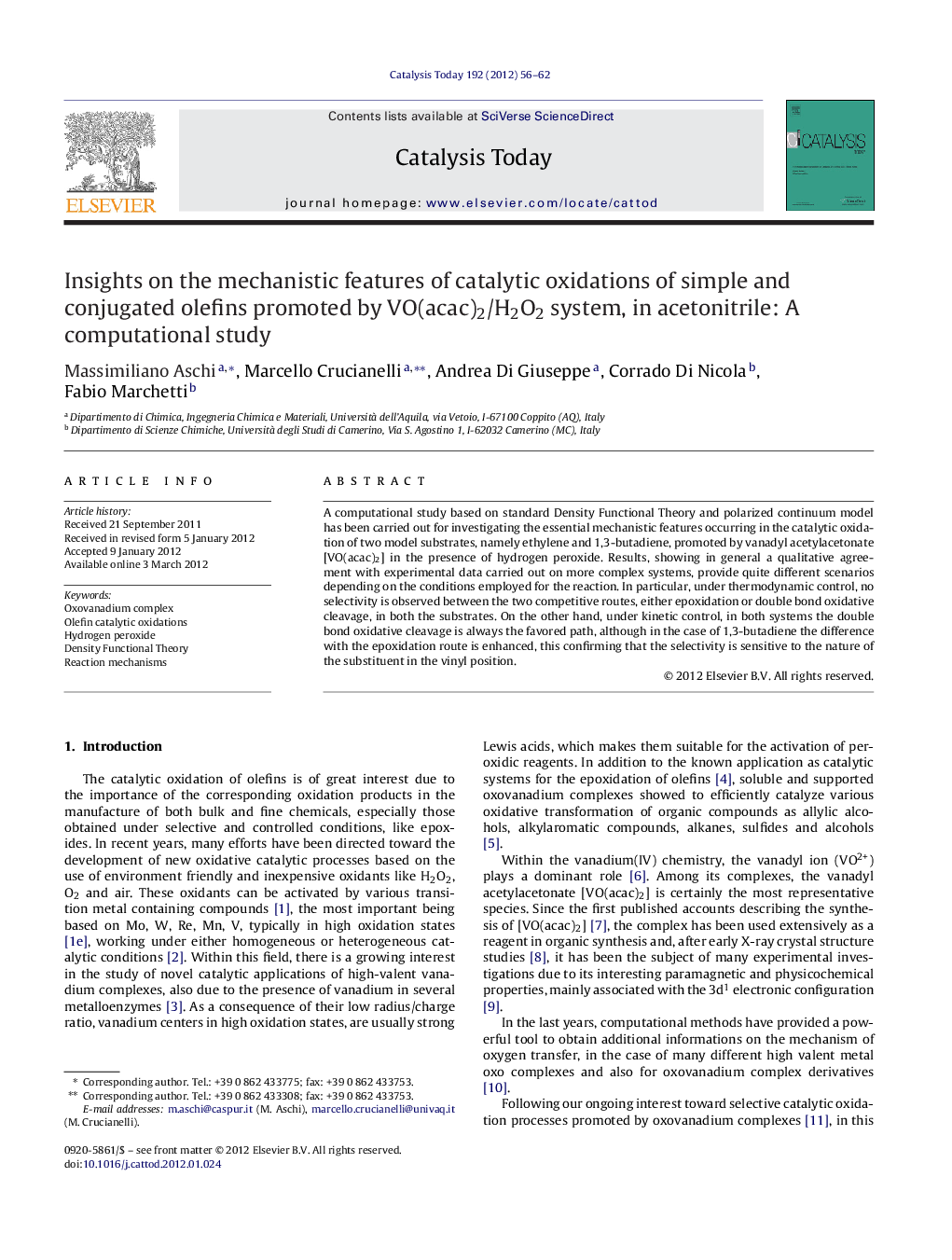| Article ID | Journal | Published Year | Pages | File Type |
|---|---|---|---|---|
| 55154 | Catalysis Today | 2012 | 7 Pages |
A computational study based on standard Density Functional Theory and polarized continuum model has been carried out for investigating the essential mechanistic features occurring in the catalytic oxidation of two model substrates, namely ethylene and 1,3-butadiene, promoted by vanadyl acetylacetonate [VO(acac)2] in the presence of hydrogen peroxide. Results, showing in general a qualitative agreement with experimental data carried out on more complex systems, provide quite different scenarios depending on the conditions employed for the reaction. In particular, under thermodynamic control, no selectivity is observed between the two competitive routes, either epoxidation or double bond oxidative cleavage, in both the substrates. On the other hand, under kinetic control, in both systems the double bond oxidative cleavage is always the favored path, although in the case of 1,3-butadiene the difference with the epoxidation route is enhanced, this confirming that the selectivity is sensitive to the nature of the substituent in the vinyl position.
Graphical abstractFigure optionsDownload full-size imageDownload high-quality image (103 K)Download as PowerPoint slideHighlights► A computational study, investigated the most important species present in the [VO(acac)2]/H2O2 mixture, in acetonitrile. ► No selectivity is observed, under thermodynamic control, between the two competitive routes, i.e. epoxidation and double bond oxidative cleavage. ► The oxidative cleavage is always the preferred path, under a kinetic control.
